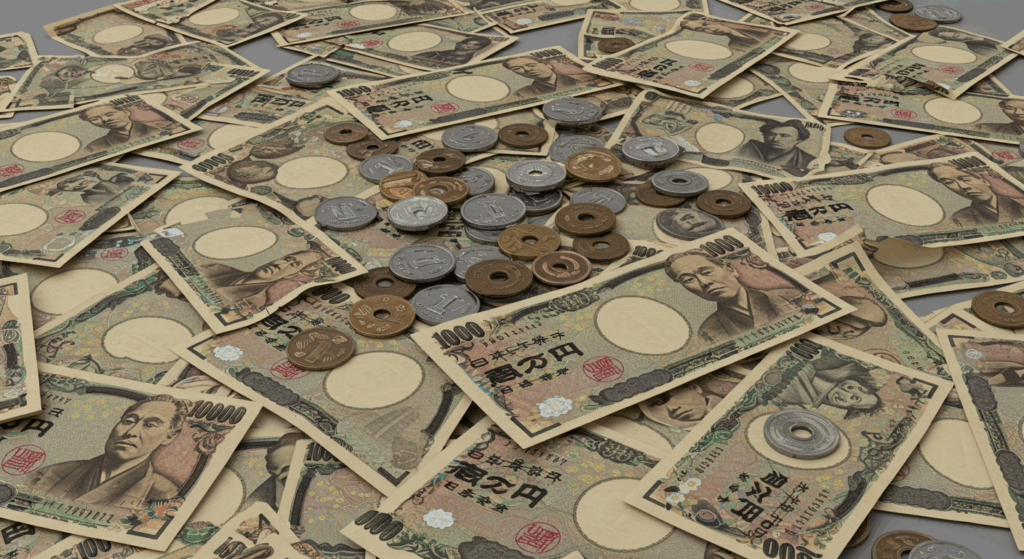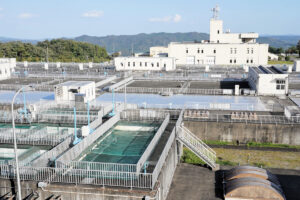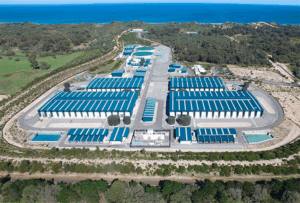The cost of this “free basic water charge” campaign is 3.68 billion yen—enough to replace approximately 90 kilometers of aging water pipes.
Instead, Tokyo is spending the same amount to waive basic water charges for just four months this summer. The timing? Right before the Tokyo assembly election (July 7) and the House of Councillors election (July 28).
While it may look like a “Tokyo Residents First” policy, could it actually be a “Politics First” move that undermines long-term infrastructure?
As a water supply expert who has worked in the field for many years, I’ll break down this policy from five key angles to explore whether it truly serves the public—or just the polls.

Really? That’s what they decided to do?
When I first read the article the other day, I honestly thought, “This could be a problem.”
In many countries, lowering water rates is often used as a political tool—especially around elections—to win public support. While such moves may help politicians gain favor in the short term, they tend to lead to negative outcomes for the water infrastructure and, ultimately, hurt the very communities they claim to help.
This time, with the Tokyo Metropolitan Assembly election just around the corner on July 7, and the House of Councillors election coming up on July 28, it may be just a coincidence—but it’s hard not to see the parallels with vote-driven water rate cuts we’ve seen overseas.
If the policy brought substantial long-term benefits, perhaps we could justify it. But in this case, I see a range of quiet yet significant negative impacts stemming from this basic charge waiver. From the next section onward, I’d like to break them down in detail.
Personally, I imagine many water engineers and experts who’ve been involved in the field for years must be feeling a deep sense of frustration at this news.
Short-Term Temptation or Long-Term Investment?
This summer, as record-breaking heat is expected, the Tokyo Metropolitan Government has announced a policy to waive basic water charges for four months as part of its heatstroke prevention efforts.
The stated goal is to “ease the financial burden on residents, encourage them to use water without hesitation, and prevent heat-related illnesses.”
However, while the intention may sound reasonable, we must ask:
What long-term impact could this temporary measure have on Tokyo’s water services?
And is this really the most effective way to protect residents’ health during extreme heat?
It’s important to take a step back and examine this policy from multiple angles—including whether it addresses the root causes of heat-related risk and whether it truly serves the public interest in the long run.
The collapse of the self-financing system
In principle, Japan’s water utilities are operated under a self-financing system.
This means that operational costs—such as staff salaries, routine maintenance, and the provision of water services—are funded entirely through water usage fees, without relying on tax revenue.
Because this principle forms the foundation of how water services are planned and delivered, decisions about infrastructure maintenance, service levels, and staffing are typically made with the assumption that no additional tax money will be provided.
Of course, this principle is not absolute. In the case of very small-scale systems, such as those run by simplified water supply cooperatives (known as kan’i suidō kumiai), it is often unrealistic to expect future large-scale repair costs to be covered entirely by user fees. In such cases, local municipalities may provide financial support through public funds—but even then, it is typically done with caution, and only after careful planning before the facilities are constructed.
Despite this long-standing framework, the Tokyo Metropolitan Government has now decided to inject tax money into its otherwise self-financing water system in order to cover the basic water charges on behalf of residents.
The Opportunity Cost: Enough to Replace 90 km of Aging Water Pipes — Gone
Slightly off topic, but the issue of aging water and sewer pipes became widely recognized after the high-profile accident in Yashio City, Saitama Prefecture.
Tokyo is no exception. The city’s total water pipeline network stretches roughly 27,000 kilometers, and about 8,900 kilometers of that—one-third of the entire system—has already exceeded its legal service life of 40 years. Replacing these aging pipes is an urgent task. Without it, we risk more frequent water outages and leaks, threatening the safe and stable supply of drinking water.
To give a sense of scale, Tokyo currently replaces about 90 kilometers of old pipes per year, which is only around 0.3% of the entire network. Meanwhile, the cost of this four-month water bill waiver policy is estimated at 3.68 billion yen—almost exactly the same amount needed to replace 90 kilometers of aging pipelines (at an average of 40 million yen per kilometer, according to the Tokyo Metropolitan Government).
If we can justify using tax money for what appears to be a short-term giveaway, isn’t it time we seriously consider allocating public funds toward one of the city’s most critical infrastructure challenges?
Subsidies Are Undermining Water Utility Finances
The recent decision to eliminate basic water charges is, in essence, being funded through a subsidy from the general budget.
While this may appear helpful in the short term, the long-term consequences of normalizing such subsidies could be serious—it risks slowly undermining the financial integrity of the water utility system.
Water fees are a critical revenue source that allows utilities to maintain service quality and renew aging infrastructure. Over-reliance on subsidies can weaken the incentive for proper management and delay necessary rate increases. Eventually, this could lead to even steeper hikes in the future, or worse, the continued deterioration of infrastructure and a decline in service quality.
In reality, Japan’s water utilities already face unavoidable challenges—declining population, and years of overinvestment in large-scale infrastructure. Rate increases are almost inevitable. If political motives begin to distort the pricing process and override sound financial principles, we risk entering a cycle of chronic deficits and fiscal instability.
Policies That Can’t Be Sustained Will Lose Public Trust
Whether that’s the case this time or not, policies aimed solely at short-term popularity ultimately risk eroding public trust.
Take, for example, the case of Santa Fe Province in Argentina. At one point, the local government made water services free of charge for eight consecutive years. The result? The water utility became financially unsustainable, maintenance fell behind, and leakage rates soared to 45%. In the end, the policy led to the effective collapse of water services. Residents suffered, and public trust in the government deteriorated sharply.
Tokyo’s current policy of temporarily waiving basic water charges faces a similar dilemma:
If it’s not repeated next year, it may be criticized as a one-off election ploy.
If it is repeated, it risks becoming a permanent measure, placing increasing strain on public finances.
Either way, there is a clear danger: the credibility of the city’s water utility—and by extension, the trustworthiness of the Tokyo Metropolitan Government itself—could be put at risk.
Spillover Effects on Other Municipalities and the Pressure of Populism
Tokyo’s decision to waive basic water charges could have significant ripple effects on other municipalities.
If residents in other cities and towns begin asking, “Why aren’t our water bills being reduced too?”, local governments may find themselves under populist pressure to follow suit—even if such measures are not fiscally feasible.
The problem is that most local water utilities, especially in smaller municipalities, operate on a much smaller scale and with weaker financial foundations than those in major cities. For many mid-sized and small towns, simply maintaining their water infrastructure is already a serious challenge.
If other municipalities were to follow Tokyo’s lead without careful consideration, we risk a nationwide deterioration of water utility finances. This could lead to lower service quality and delays in essential infrastructure upgrades.
We must remember: water is not a charity, nor is it a commodity to be discounted for political gain. It is a lifeline—a fundamental service that sustains daily life and public health. Now more than ever, it’s important to reaffirm the principle that access to safe and reliable water should be preserved through thoughtful, sustainable management—not short-term populist appeals.
When Public Awareness Declines, So Does Water Service Quality
There are countries and regions where water services are provided for free or at significantly reduced rates. But in my experience, those are often the very places where water service quality tends to be poor—leading to noticeable declines in what residents actually receive.
What makes matters worse is that, even when the service deteriorates, recipients may not necessarily feel dissatisfied. Instead, there’s a tendency to think, “Well, I guess this is fine for the price I’m paying.” This mindset erodes the public’s willingness to pay for water, which can lead to higher rates of non-payment. In turn, this causes even more service degradation—a vicious cycle that’s difficult to break.
I don’t believe Tokyo residents are likely to fall into this trap easily. But if this policy encourages people to pay less attention to the value of water, it’s not unthinkable that we could see a subtle shift—a weakening of civic engagement that could, over time, affect service quality.
Recommendation: Short-Term Populism Is a Long-Term Mistake
The recent move to waive Tokyo’s basic water charges may seem like a simple and popular short-term fix—but in the long run, it risks becoming a costly mistake for residents.
Here are three key recommendations from a long-term perspective:
1. Be Transparent – Show the Value Before Passing It On
Water utility management should be transparent, especially when it comes to decisions that affect future generations. Tokyo needs to clearly communicate how water fees are being used, what the future investment plans are, and the basis for any future rate changes. Residents deserve to understand the value of what they are paying for—and how that supports the future of their city.
2. Seek Real Solutions – Not Just Tax-Powered Discounts
If there is a genuine push to lower water bills, it should come from structural improvements, not temporary tax-funded giveaways. Efficiency improvements and innovation—such as AI-based leak detection, which has already saved an estimated 180 million yen annually—should be pursued and properly explained to the public as the foundation for any rate reduction.
3. Target the Right Support – Don’t Rely on Blanket Measures
If the goal is to support vulnerable households that cannot afford the electricity to run air conditioners during extreme heat, water fee waivers may not be the right tool. While we understand that electricity pricing is beyond Tokyo’s direct control, choosing water because it’s “easier to adjust” risks appearing superficial. Instead, support should be delivered through more direct and appropriate means.
Populist policies may feel good in the moment, but lasting trust is built through thoughtful planning, transparent governance, and targeted action.
Conclusion
Tokyo’s decision to waive basic water charges may appear to be a resident-friendly move on the surface. But beneath that surface lie deeper risks: worsening utility finances, delays in infrastructure renewal, and the potential for much higher rates in the future.
Instead of temporary discounts, let’s invest in the future to ensure stable and sustainable water services.
What do you think about Tokyo’s decision to make basic water charges free?







